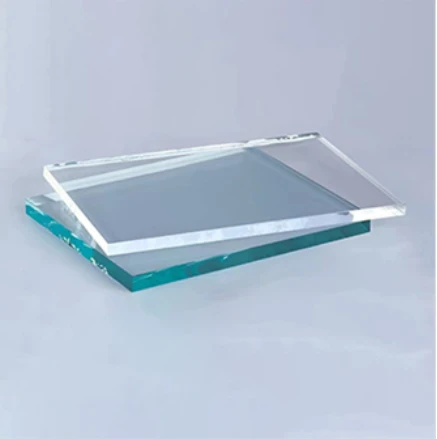Nov . 23, 2024 22:10 Back to list
glass tempering
The Art and Science of Glass Tempering
Glass tempering is a specialized process that enhances the strength and durability of glass, making it suitable for a variety of applications in architecture, automotive, and even electronics. By understanding the fundamentals of glass tempering, we can appreciate its significance and the innovations that stem from this intricate procedure.
The tempering process involves heating glass to a temperature of approximately 620 degrees Celsius (1,148 degrees Fahrenheit) and then rapidly cooling it. This thermal treatment alters the internal structure of the glass, creating a compressive stress on the surface while maintaining tension on the interior. As a result, tempered glass becomes significantly stronger than ordinary glass—up to five times more resilient, which makes it ideal for high-stress environments.
One of the primary reasons for using tempered glass is safety. In the event of breakage, tempered glass shatters into small, blunt pieces rather than sharp shards, minimizing the risk of injury. This characteristic is particularly important in public spaces, such as offices, shopping centers, and transportation vehicles, where safety standards are paramount. Furthermore, tempered glass is often used in shower doors, glass railings, and glass facades, adding an element of elegance while ensuring safety.
glass tempering

Apart from safety, the aesthetic aspect of tempered glass cannot be overlooked. With its ability to hold large panes without support, architects and designers can create striking visual elements in structures. The sleek appearance and clarity of tempered glass enhance the overall design, making it a popular choice in modern architecture. It allows natural light to flood indoor spaces while maintaining a barrier against the elements, contributing to energy efficiency in buildings.
Moreover, tempered glass can be manufactured in various styles and finishes, such as tinted, frosted, or low-emissivity glass, which further expands its usability. Tinted glass can reduce glare and heat, while frosted glass provides privacy without compromising natural light. Low-emissivity (Low-E) glass reflects infrared light, keeping buildings cooler in the summer and warmer in the winter, thus promoting energy conservation.
The manufacturing process of tempered glass involves several critical steps, including cutting, edge grinding, and cleaning the glass before it is subjected to thermal treatment. The precision required at each stage ensures that the final product meets stringent quality standards. Advances in technology, such as automated systems and infrared heating, have further improved the efficiency and consistency of glass tempering.
In conclusion, glass tempering is a vital process that combines art and science to produce a material that is both functional and visually appealing. Its strength, safety features, and aesthetic versatility make tempered glass a favored material in various industries. Understanding the intricacies of this process not only highlights its importance but also opens the door to future innovations in glass applications, assuring us that tempered glass will continue to play a significant role in our built environment.
-
Safety and Style with Premium Laminated Glass Solutions
NewsJun.24,2025
-
Reinvents Security with Premium Wired Glass
NewsJun.24,2025
-
Premium Float Glass Line for Modern Architecture
NewsJun.24,2025
-
Low Emissivity Glass for Energy-Efficient Architecture
NewsJun.24,2025
-
High-Performance Insulated Glass Solutions for Modern Architecture
NewsJun.24,2025
-
Elevates Interior Style with Premium Silver Mirror
NewsJun.24,2025
Related PRODUCTS














